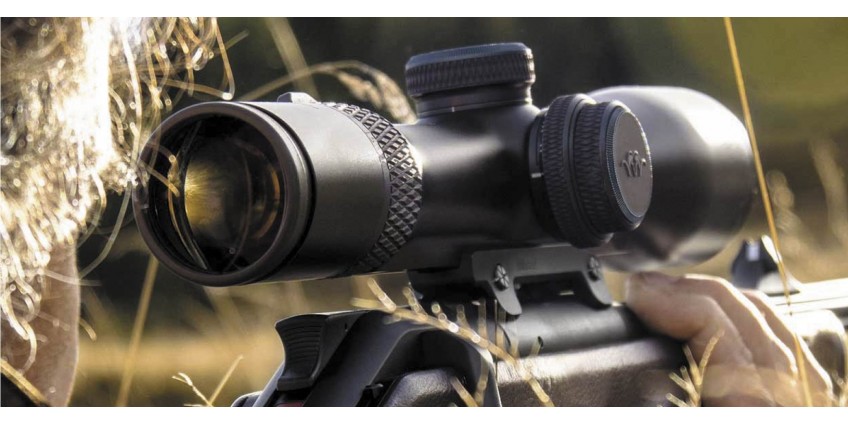
This product is not exportable outside the United States.
By adding this item to cart, you agree and acknowledge the Export Policy and confirm that you are a person in the United States with no intentions to illegally export the device.
This product is not exportable outside the United States.
By adding this item to cart, you agree and acknowledge the Export Policy and confirm that you are a person in the United States with no intentions to illegally export the device.


0

0


Various weapons are widely used by the military, law enforcement officers, security guards, and hunters. It helps complete the tasks and achieve the desired goal in all cases. Various weapon optics are used to make this process as efficient as possible. Most of it is complemented by weapon reticles. They are images of dots and lines that help the shooter aim better and reduce the number of misses. Such patterns are built into the eyepiece of the optics, which significantly simplifies the process of their operation. Many types of reticles are optimized for use in certain conditions. Their choice depends on many factors and is carried out taking into account the user's needs.
The combination of weapons and optical instruments is not surprising these days. However, this was not always the case. A few centuries ago, no one could even think about using optical sights. In those not very distant times, everyone relied solely on their skill and ability to shoot without misses.
The natural history of weapon optics began at the beginning of the 17th century. At that time, Hans Lippershey, a well-known glasses manufacturer in the Netherlands, created a device that made it possible to see and carefully examine distant objects. The master patented his invention in 1608, which many experts consider the beginning of the era of optical instruments. Fascinated by what they saw, many famous scientists began to develop their versions of such devices. A year later, Galileo Galilei presented his device to the world, which had a relatively high degree of approximation and made it possible to observe distant objects. Galileo used his invention as a telescope, observing stars, planets, and other space objects. In the next 60 years, several dozen types of similar devices were created. Not all of them worked well and allowed us to see far away. The apogee of this period was 1668. At this time, the English physicist Isaac Newton created an apparatus everyone considered the first genuinely high-quality optical device. This telescope set a specific direction for the development, which later led to the appearance of sights.
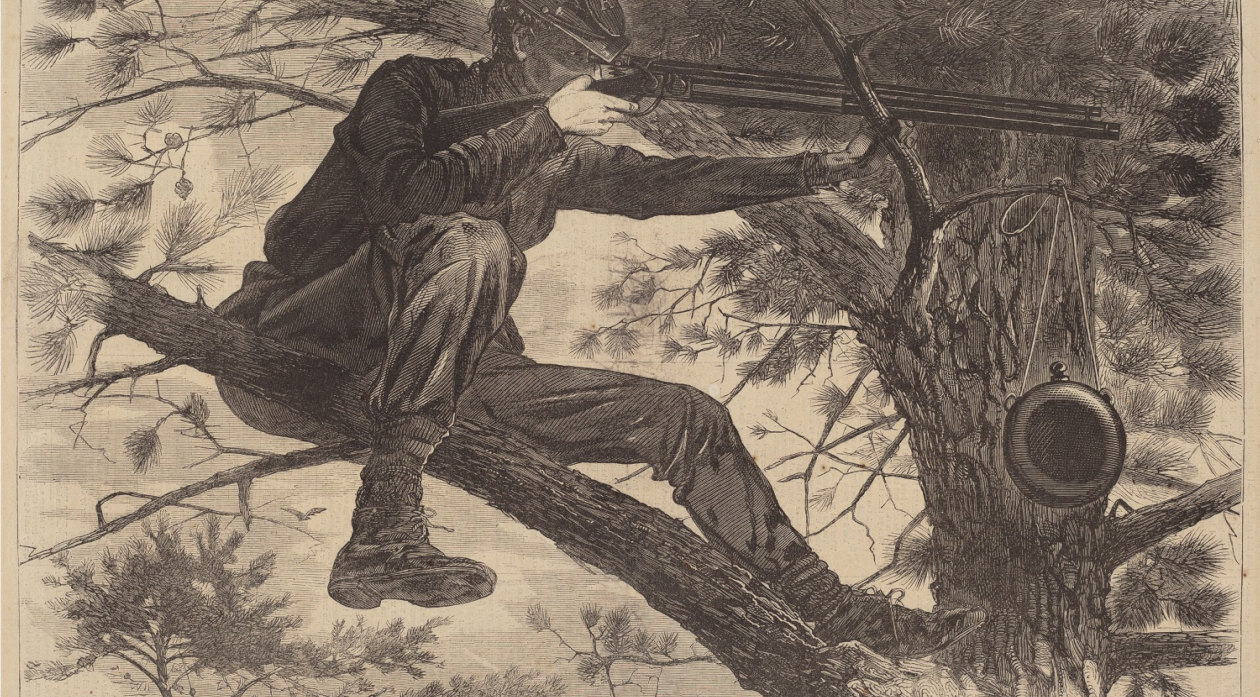
Newton's invention gave impetus to the development of weapons optics. However, there was still a lot of time before her appearance. During this period, all owners of firearms used exclusively mechanical type sights. They consisted of two elements. The first was fixed in the back of the trunk, and the second was in the front. For aiming, the shooter closed one eye and visually combined both elements, after which he aimed them at the target. This method was quite effective and was used everywhere. Its main advantage was reliability, durability, and ease of use. Some snipers liked the mechanical sight so much that they did not even exchange it for the optics invented later.
The arms industry has developed very rapidly. The created muskets quickly became obsolete, and new ones replaced them. The high rate of improvement in weapons made mechanical sights a lagging link, which led to their gradual abandonment. In 1776 the first optical model was created. Its author was a man who had no direct relation to military affairs but only served in one of the units for some time. His name is Charles Wilson Peel. He made an optical sight that few people used because it injured the shooter's eye when recoiling. Not a successful attempt became a step towards creating genuinely high-quality optics. Thanks to the American Morgan James, it appeared in the 30s of the XIX century. He successfully combined new technologies with his rifle at that time and received a versatile weapon that potential and natural enemies did not have. In 1844, John Chapman offered James several options for improving the rifle. As a result, a good tandem appeared, which a few months later introduced an updated sight called Chapman-James. Its peculiarity was the presence of achromatic lenses in the design, providing a better image. Also, this element had less weight, making it possible to reduce the weight of the entire sight. The mass production of the updated model was launched in 1855, which marked the beginning of the modern era of gun optics.
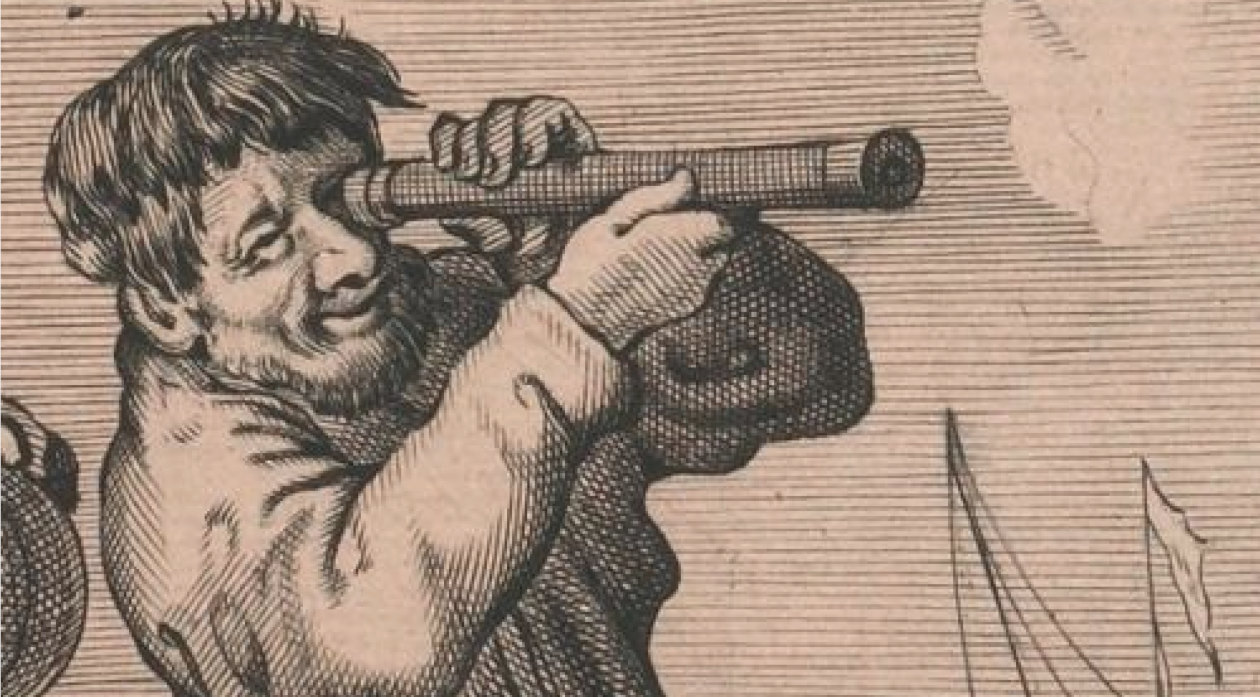
For the first time in combat practice, weapon optics were used during the American Civil War. At that time, sights were familiar, and many American companies were engaged in their production. These devices gave a tangible advantage over opponents and allowed them to achieve their goals. During this period, the specialty "sniper" was entrenched in military circles. She was characterized by people who honed their shooting skills using various optics. In the future, they will use their skills during the hostilities. As weapons for joint use with optics, the Union soldiers used Sharps rifles, and the Confederate soldiers used Whitworth rifles. The latter was considered at that time the most effective and accurate. That is why they became regarded as the first genuinely modern sniper rifles.
Weapon optics proved excellent during the American Civil War, so its development was unstoppable. Over the following decades, many new rifles appeared, using different optical sights. Each of them had its characteristics and was well suited for specific combat missions. The next test for weapons optics was the First World War. It began in 1914 and ended only four years later. At this time, sights were used everywhere, and their presence in army units gave a tangible advantage over the enemy. Germany had the most significant number of weapons with optics. She used about 20 thousand rifles with modern sights and, thanks to them, dominated her enemies for a long time. To reduce their backlog, the opponents actively improved the existing optics and achieved good results.
The most fruitful period, in terms of the development of weapon optics, was 1939-1945. They fell during the Second World War, which became the bloodiest in the history of humanity. At this time, optical sights were used as primary weapons and were available to many infantry. The most popular were universal models that could be installed on different types of rifles and quickly repaired in case of malfunctions. Nazi Germany was the leader in the number of weapon optics used. The soldiers of the Wehrmacht were reasonably well equipped with it, which gave them a significant advantage over the enemy troops in the first years of the war.
Among the allied forces, the United States was the leader in the number of weapons optics used. Its soldiers used mainly M40 rifles with a scope mounted on them. The latter had a 10-fold increase, a record figure for that time.
A few years after Germany surrendered, the Vietnam War began. It became one of the most significant military conflicts of the 20th century that left its mark on history. During the war, American soldiers actively used various weapon optics. Such optics gave a considerable advantage and helped to achieve the tasks set by the command. During this period, night vision scopes began to be widely used. With their help, soldiers could even, in complete darkness, orient themselves in the jungle and find the location of enemy troops.
Gradually, weapon optics improved and reached their current state. Today, this industry continues developing, and its peak has not yet been passed. The armed forces of different countries actively use its products. Optical sights complement the weapons of snipers and infantrymen, turning them into real universal soldiers. Also, modern optics are used by civilians. With its help, people protect their property and hunt various animals. Most of the models available today can detect a target more than 1 kilometer away. This became possible thanks to a considerable increase unavailable a few decades ago. Another feature of modern weapon optics is its compactness. This dramatically simplifies the process of its operation and eliminates any discomfort for the user. In addition, there is a trend towards the universalization of devices. In this regard, you can now find many models supplemented by a rangefinder, thermal imager, and night vision device. All this opens up new horizons and actively enables weapon optics to develop for several decades.
The development of the weapons industry has led to the obsolescence of mechanical sights and their replacement with optical ones. This made it possible to increase the accuracy of shooting and minimize the consumption of ammunition. However, there is no limit to perfection, so the leading companies involved in producing weapons optics began to look for ways to improve their products. The result was a unique reticle built into the eyepiece.
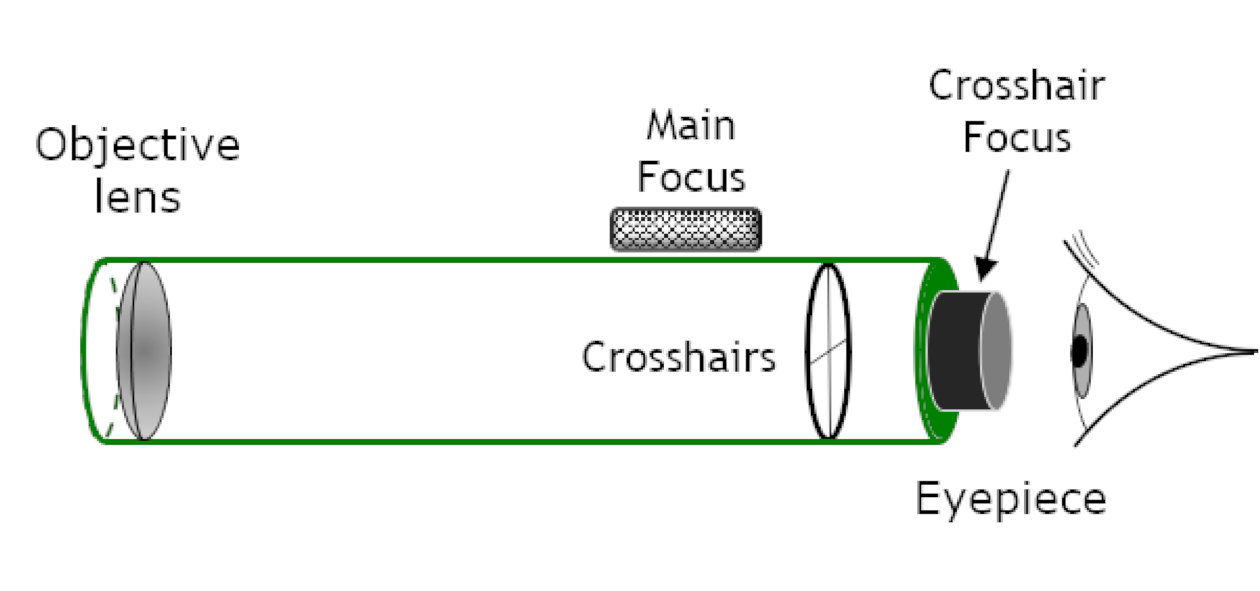
It begins its history in the distant 1940s. During this period, optical sights began to be supplemented with reticles made from ordinary human hair. The process of applying such a grid to a glass plate was rather complicated. This was due to the need to carry out work with the maximum and highest accuracy, which only a few of the best artisans could do. Also, the difficulty was the lack of necessary premises where the air is filtered and fine dust particles are removed. The latter settled on the glass plates while the specialist placed human hair on them and checked the correctness of their location. Even under ideal conditions and observing all the subtleties known at that time, it was impossible to avoid dust on the plate altogether. As a result, small particles, invisible to the naked eye, were visible through the scope. They distracted the shooter and prevented him from aiming typically. Also, the presence of dust led to significant light losses, which significantly worsened the quality of the driven image. The latter became darker, duller, and had a mixture of some shades of color.
Human hair has been used for a long time to create a weapon mesh. They were not an ideal material due to their thickness of 0.07-0.08 mm, which was large even for the 40s and 50s of the last century, but they had high strength and ensured the durability of the mesh. After the end of World War II, weapon optics began its new round of development. There were many proposals to replace the human hair on the mesh with another, thinner material. The best option, many considered the decision of Robert Thomas. He experimented a lot with different materials and concluded that it is best to use the help of the surrounding nature. During his travels in the Appalachian mountain range, Thomas discovered a unique, previously unknown spider species. Their web became the ideal basis for creating a grid. This material is 30 times thinner than human hair. At the same time, it is practically not inferior to it in terms of strength and durability. The only problem with using such a web was the difficulty of finding it. For this, entire expeditions were organized to search for and collect valuable material. All this led to an inevitable increase in optics costs, which was a real problem in the difficult post-war period.
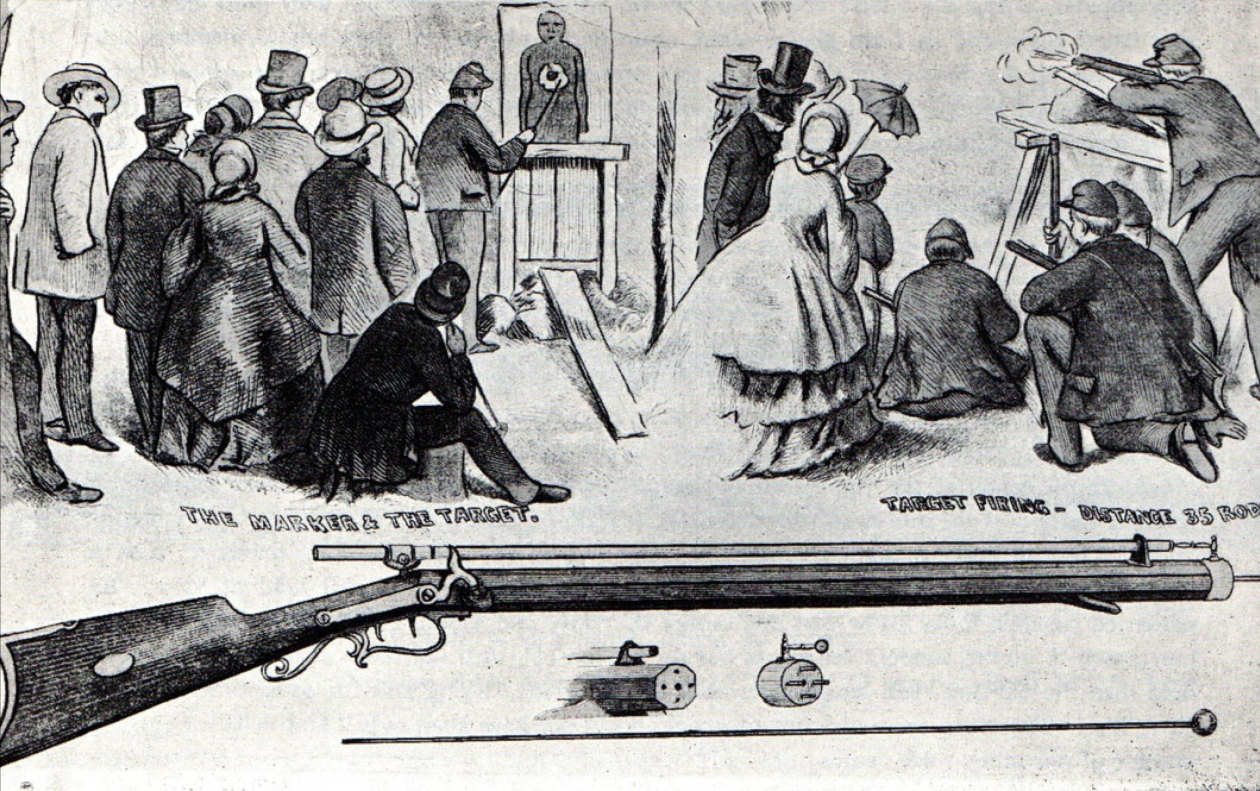
The next stage in the development of gun nets was from 1950 to 1970. At this time, people learned how to get a quartz thread. It could be made of any thickness, which allowed optics manufacturers to experiment and choose the best option for creating grids. In addition, manufacturing a quartz thread costs much less than searching, collecting, and delivering a helpful web. For 20 years, the material for the nets has not changed. At the same time, various experiments were carried out, which did not give the desired results. The period of stagnation ended in the 70s of the last century. The quartz filament was replaced by tungsten filament. It became an ideal material for mesh, with a thickness of only 0.0025 mm, sufficient strength, and long service life. Tungsten filament became used by most gun optics manufacturers and became a part of reticle history for a long time.
In modern weapons optics, wire mesh is used. It is made mainly of a copper alloy, characterized by a relatively low cost and good quality. This mesh often has a silver tint. At the same time, through the scope, it appears completely black. Another essential feature is the thinness, which is not inferior to that of a tungsten filament. Wire mesh has a sufficient margin of safety. At the same time, it is gradually stretched due to the impact of the powerful recoil of modern weapons, which inevitably leads to its rupture. Due to all these features, such reticles are used only on sights of the minimum and medium price categories.
Expensive gun optics need better and more durable reticle. This appeared relatively recently but quickly became popular with manufacturers. It involves the application of points and lines using photographic etching. In the latter, a metal foil is used, on which the necessary pattern is superimposed. Further, the material is treated with special chemicals that corrode the foil and do not affect it only in places closed by the template. The finished mesh has a minimum thickness and is carefully glued in the right place of the optics. This process requires compliance with all the nuances at each stage. Only in this case will it be possible to get a sight with an ideal grid.
Recently, optical manufacturers have begun to use the laser engraving method. It allows you to get a high-quality and accurate mesh without shifts and irregularities. This method is quite expensive, so it is used to make the most advanced optical sights. Laser engraving is an advanced method of applying a grid to glass. It makes it possible to obtain an image that is not afraid of the strong recoil of the weapon, the impact of various external factors (for example, moisture or ultraviolet radiation) and has a long service life. In addition, the engraving method makes it possible to realize any ideas of the manufacturer, regardless of the complexity of the mesh pattern. The only downside is the light loss. However, applying a special anti-reflective coating on the glass makes it possible to minimize them.
The variety of weapon meshes is fantastic. The choice of one of them directly depends on the target set for the shooter and on the individual preferences of the owner of the weapon with an optical sight. Each optical manufacturer develops its options and actively uses them on its products. Most of the presented patterns are unique, which maximizes the choice. They are united only by the ability to help the shooter aim faster and reduce the number of misses. Each type of grid has its characteristics, as well as pluses and minuses. Therefore it is suitable for specific tasks.
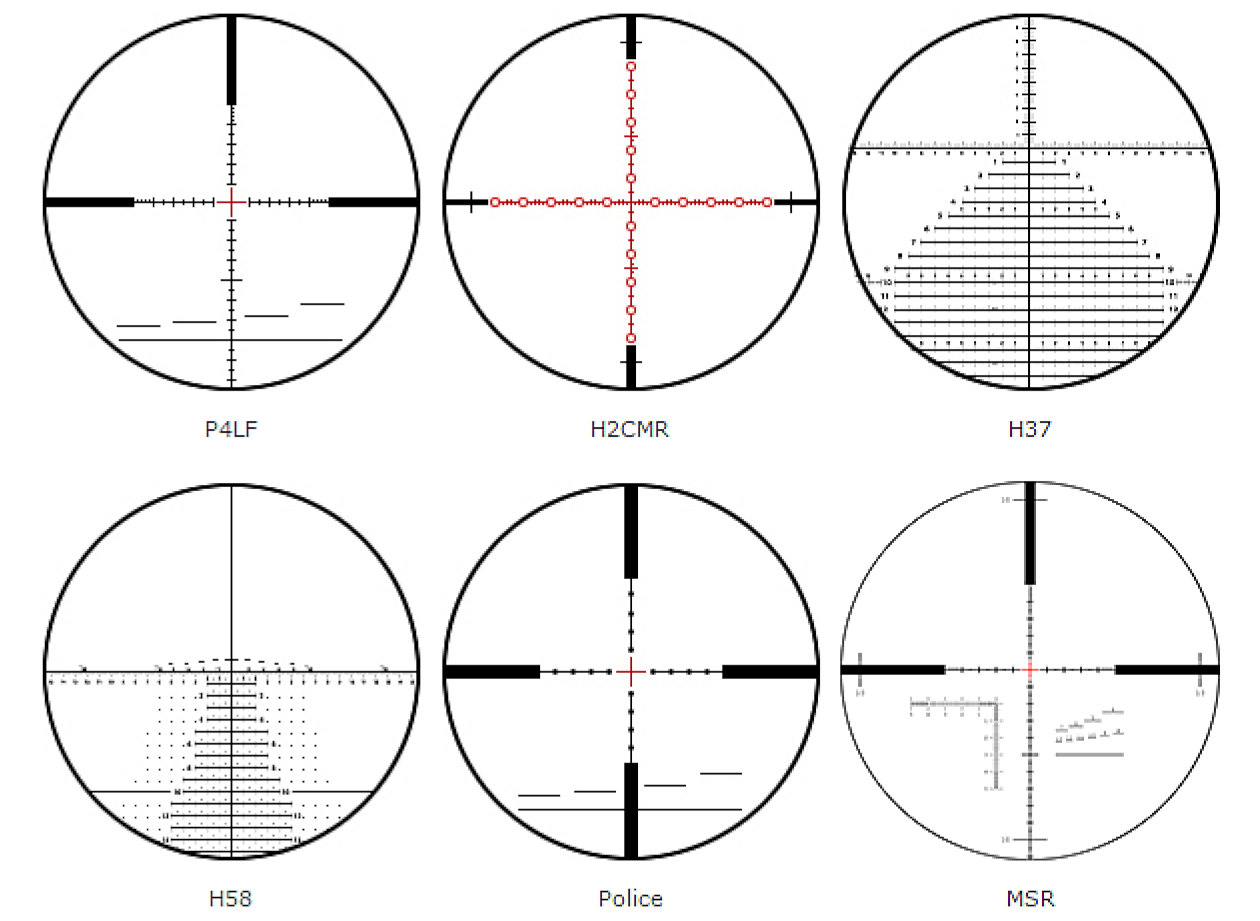
This type of grid should rightly be called classical. Shooters have used it for several decades but remain relevant today. This grid pattern is made in the form of horizontal and vertical lines, which intersect each other at a right angle. At the place of their intersection, a point is periodically placed, which serves to aim at the target. Original is practically not used by the military, as it is far from the most effective and convenient. At the same time, it is often used by civilians who acquire weapon optics for hunting and protecting their homes. In most reviews, people using Original praise the grid for the simplicity of the drawing and for not having a lot of extra lines on it. This makes this option one of the best for a novice hunter.

This type of mesh is also one of the simplest. It is used on sights of a budget price category bought mainly by amateur hunters. Also, this type is actively used in various civilian areas, from geodesy to recreational activities. A dot is a circle with a dot in the center. O can be of multiple sizes and colors. The most common models are those with red and black dots, which can be easily seen through an optical sight.
Dot has several variations. There are such grids with a partial or complete crosshair and entirely without it. Used as a supplement, lines can be located on either side of the point. The purpose of applying them to the grid is to simplify the aiming process and the shooter's ability to assess the weapon's position relative to the horizontal and vertical plane. Dot is actively used when shooting at short distances. In this case, it is better to use a more complex pattern to defeat distant objects.
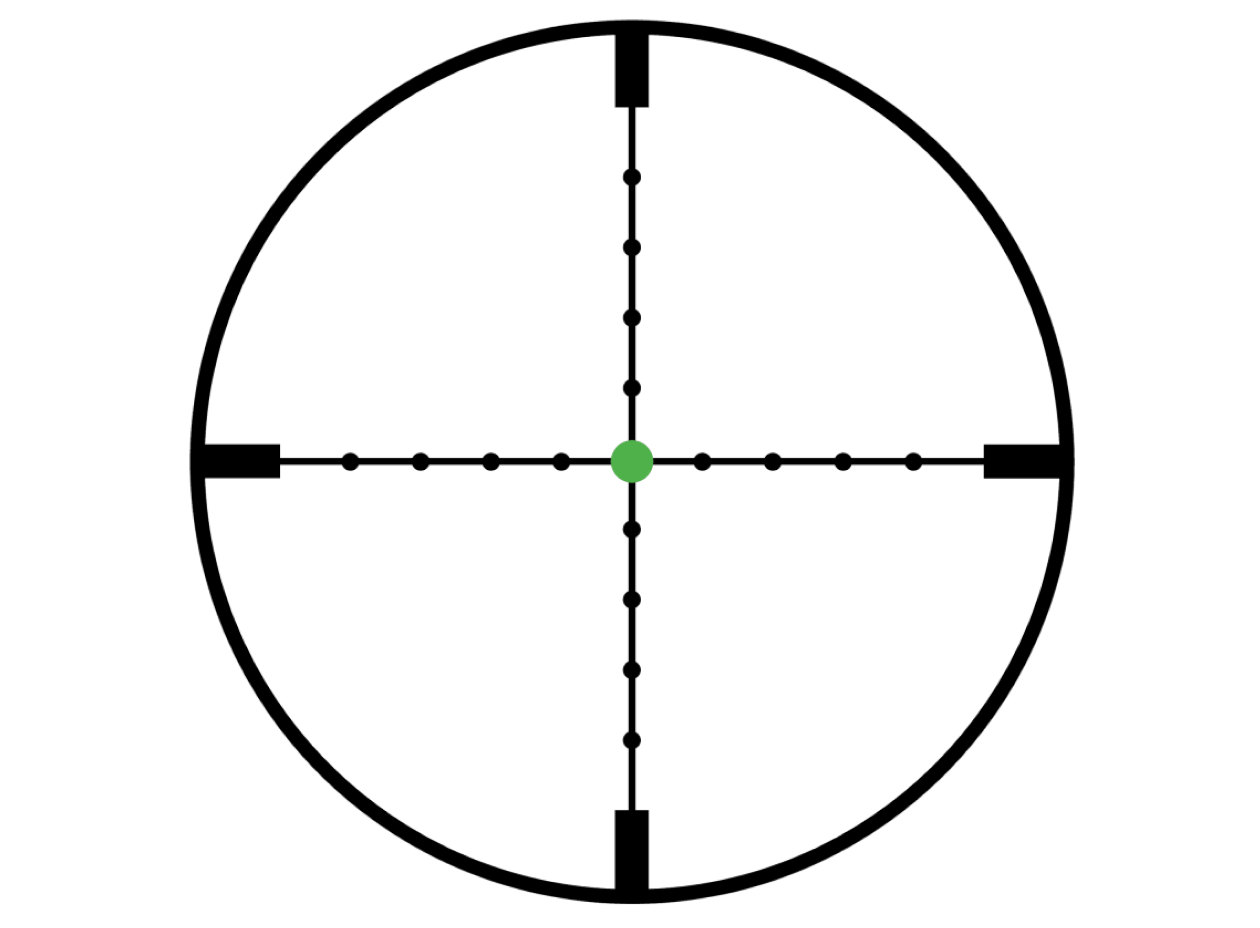
The German grid is unique and, at the same time, widely used. It is used everywhere, from hunting to various sports competitions. The military does not often use this option because of its simplicity and inefficiency during combat missions. German is a vicious circle with one horizontal and one vertical line. They intersect in the center at right angles and form the basis of the grid. It is complemented by thickened lines superimposed on top of existing ones. These lines take up about ¾ of the base, leaving some space in the center of the grid. There are several varieties of German. The most popular of them are two. The first has three thickened lines to the right, left, and bottom of the center and the second has 2 (top, bottom, or correct, left). Also, in some variations, the center of the grid is supplemented with a dot for more convenient aiming at the target. The most common are black and red lines. They also often use patterns with illumination, which is necessary for firing at night.
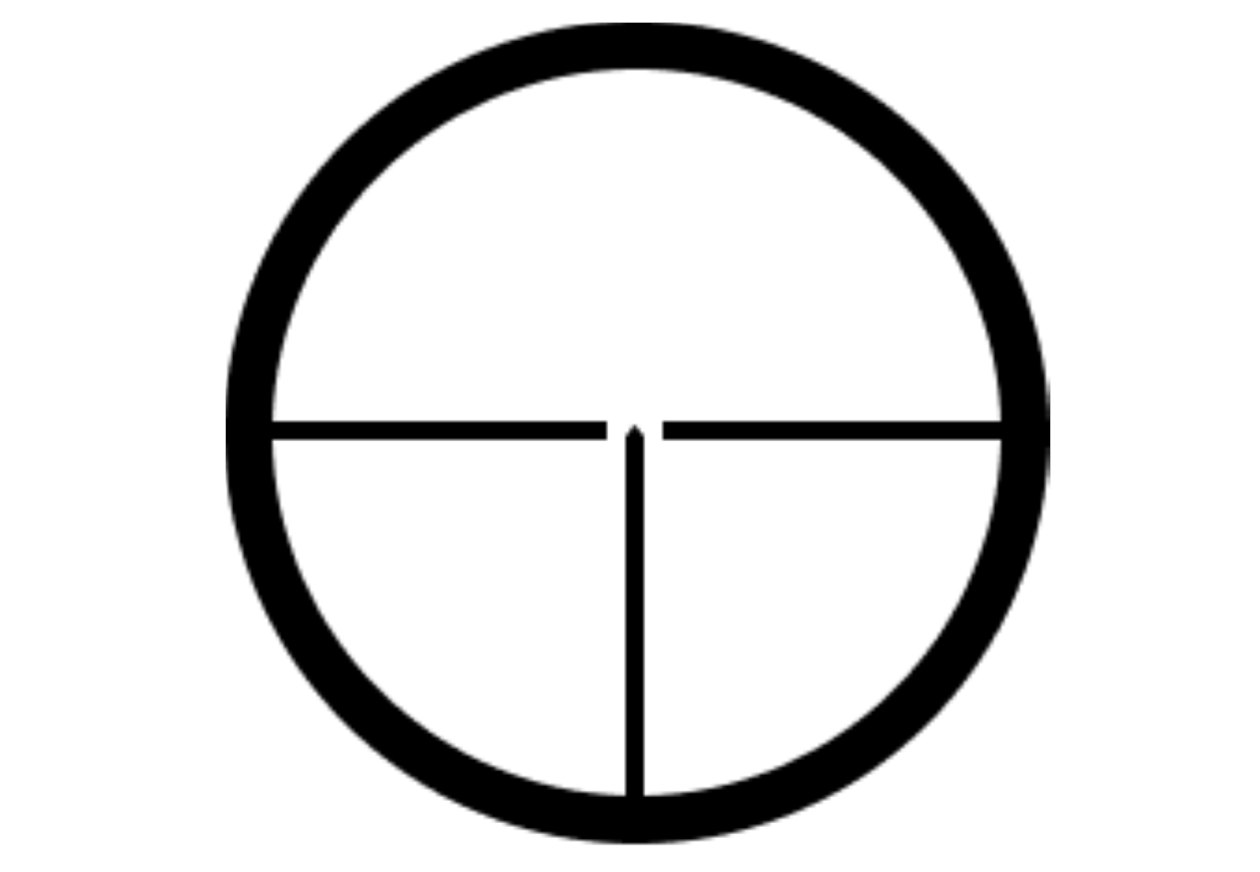
This mesh option is the most popular and widely used. Most often, it is used on optical sights designed for installation on hunting rifles. Duplex is known for its versatility. It has a simple pattern and is liked by most shooters. The pattern consists of 2 parts. The first is the base and is made in the form of lines crossed at right angles. The second part is thickened columns, which are located on all four elements of the base and do not reach the center by about ¼. This arrangement allows you to draw attention to where the lines cross and increase the accuracy of aiming the weapon at the target.
Duplex is effective in any conditions. It is ideal for hunting in open spaces and dense vegetation. Also, this reticle performs equally well when shooting at large and small targets. This makes it the best choice when hunting animals of various sizes. Each manufacturer of such a grid makes changes to its pattern. The result is patterns with colored lines and a marker in the center.
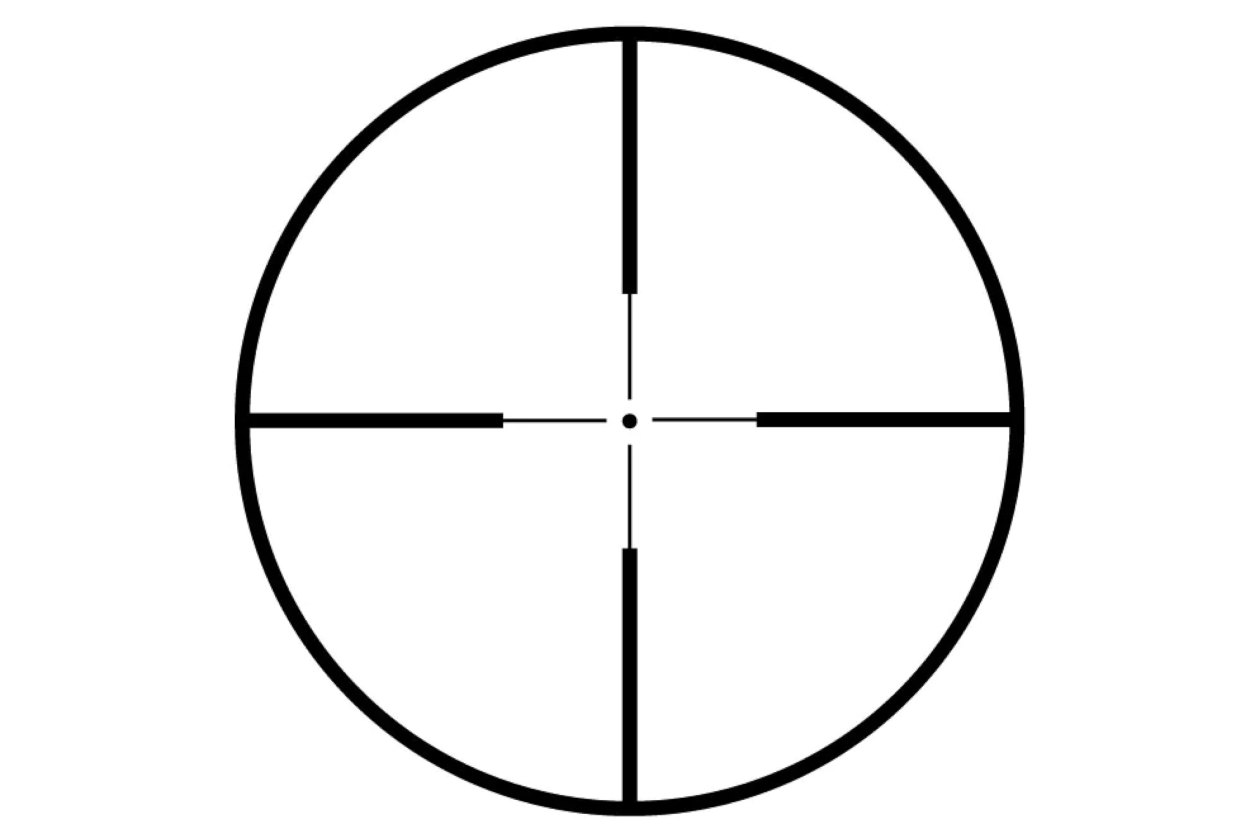
This grid is an improved version of German. It differs from it only in the presence of several markers on the bottom of the vertical line. These markers can be represented as dots or circles. They are located at a certain distance from each other. They are intended to calculate and compensate for the bullet drop rate resulting from the impact on it of the laws of physics and various environmental factors (humidity, wind, etc.).
BD allows the shooter to move the point of aim. This helps to increase the shooting accuracy in cases where the target is very long. Because of this net feature, it is used mainly for hunting in open areas. In addition, BDC is widely used in the military sphere, helping snipers to hit enemy human resources from a safe place.
If desired, you can find several options for BDC. In addition to the classic, there are more complex ones. They are supplemented by special marks located along the horizontal line. There are also patterns where markers are all over the field of view. However, such grids are rarely used and are suitable for specific tasks.
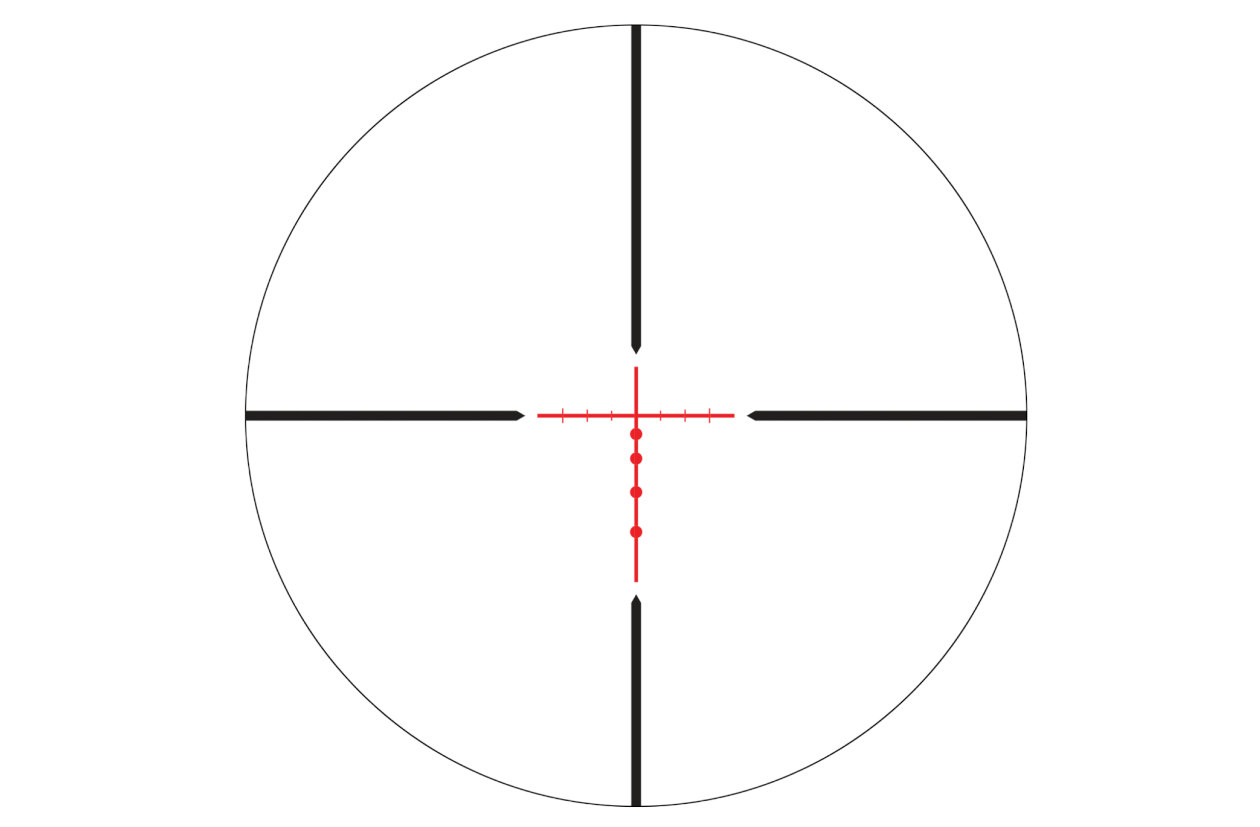
This mesh is in demand among the military and civilians. It is made in the form of a crosshair of a vertical and horizontal line with thickened edges and a thin center (intersection). From the latter, several points depart in different directions, located at a distance of 1 milliradian from each other. This pattern allows shooters to adjust to compensate for bullet drops and determine the approximate distance to an enemy animal or soldier.
The Mil-Dot is perfect for taking long-range shots. Because of this feature, it is used by military snipers who perform responsible command tasks. Also, hunters who decide to shoot a game in an open area can use such a net. Mil-Dot always has the same pattern. At the same time, color variations are available, selected depending on the conditions of use of the sight. There are also illuminated grids used during shooting at night.
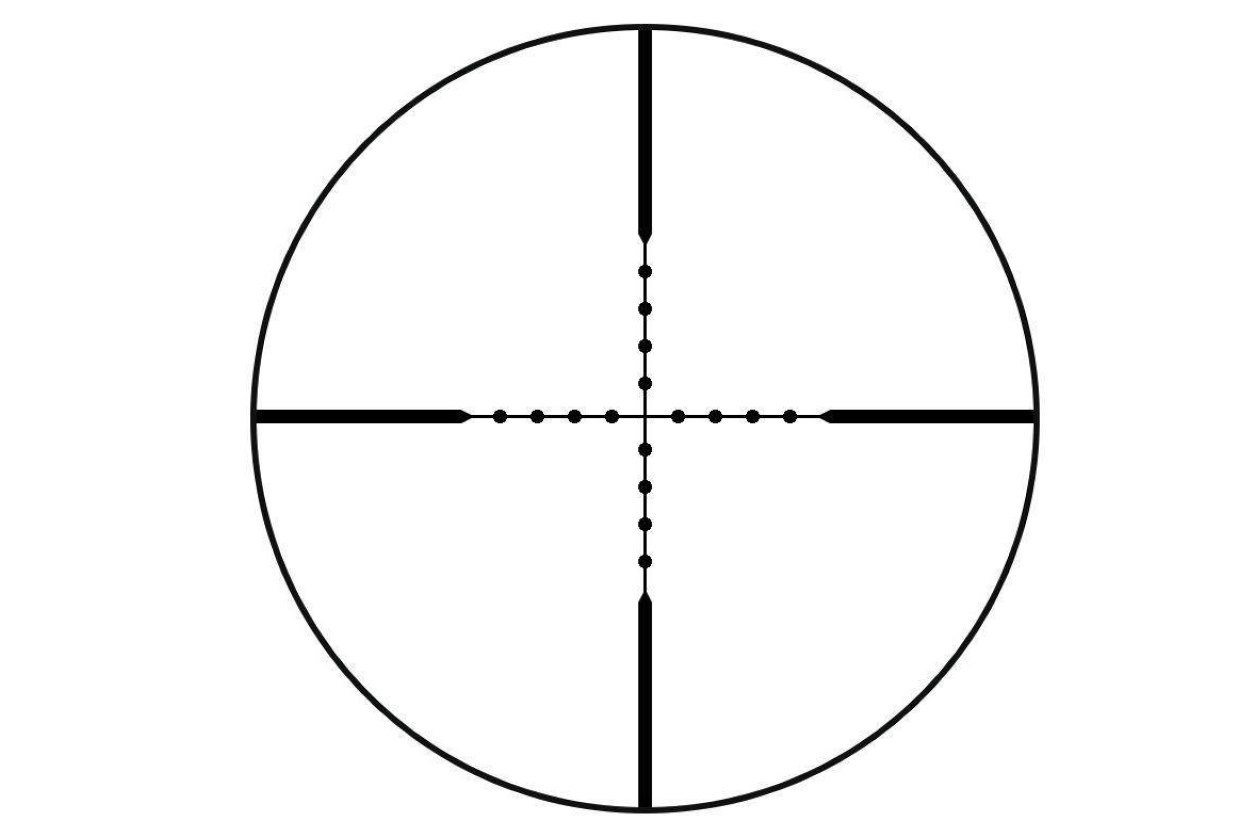
This unique, catchy-named reticle is designed for shooting from a distance. It is a standard base like Duplex and an additional part made in the form of a Christmas tree. The latter is located in the lower part (under the horizontal line) and consists of several segments, each longer than the previous one. These segments have additional markers in the form of notches, circles, or dots. All of them help the shooter change the point of aim, the need for which arises due to the effect of windy weather on the speed and range of the bullet.
The military most often uses Christmas trees. Also, such a grid is used in some sights designed for hunting rifles. In all cases, it is pretty useful, as it helps reduce the percentage of misses and ammunition consumption.

This classic type of mesh is ubiquitous. It has been used for a long time and remains relevant today. Non-Illuminated is intended for firing in the daytime. They are simple, easy to use, and much cheaper than illuminated models. All this makes them an ideal choice for civilians.
Non-Illuminated can be made in any pattern. The simplest options are limited to a crosshair of a vertical and horizontal line or a marker in the middle. In most cases, such grids are painted black. Also, sometimes there are red patterns or combinations of these two shades. At the same time, complex drawings can have additional elements that allow you to estimate the distance to the object and make changes in connection with the current external conditions (for example, when the wind increases or decreases).
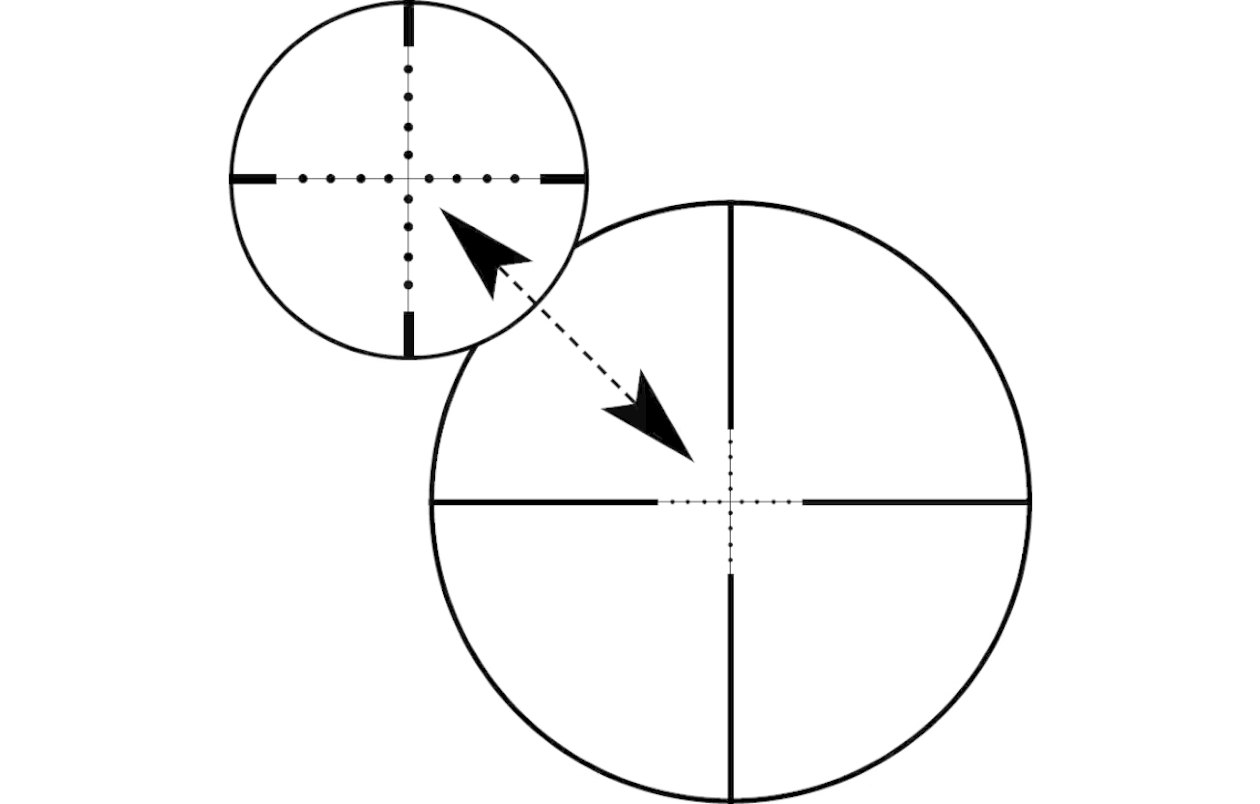
In various models of optics, you can find several variations of Illuminated. These reticles allow the shooter to see the optimal aiming point and aim the weapon at the target. They also prove effective during the day when the shooter lacks natural light (for example, in cloudy weather).
There are many variations of Illuminated. Each has its pattern and is intended to perform a particular task. In addition, such grids can be partially illuminated. In such models, only the central dot or crosshair of lines becomes visible in the dark. Illumination is considered an expensive option for civilians. At the same time, professional hunters do not spare money to buy optics with such a grid. In addition, the illumination makes it possible to operate the grid on devices used in astronomy and geodesy.
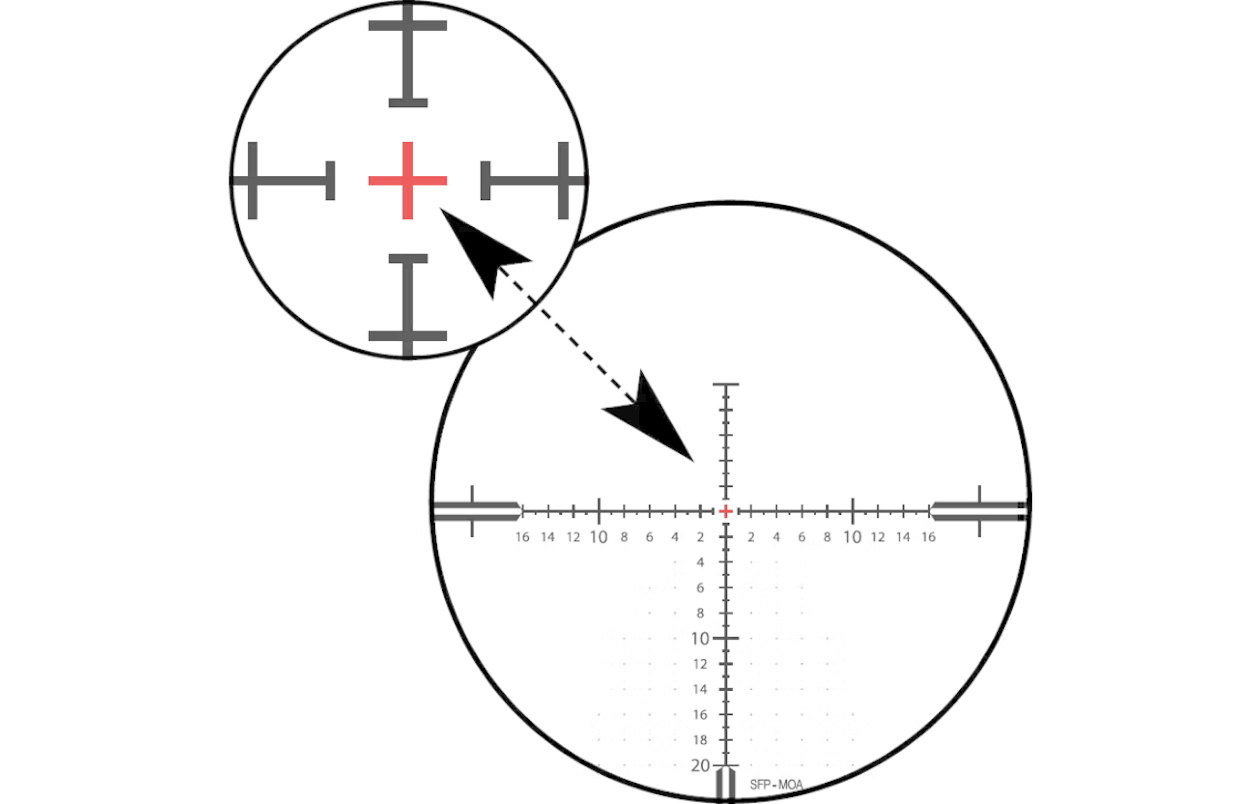
Weapon optics is developing quite quickly. Every year it becomes more and more perfect and suitable for various tasks. Inextricably with this is the modernization of weapon grids. Gradually, they become more versatile and help shooters reduce the percentage of inaccurate shots. Sights and their reticles have not yet reached the peak of their development, so many exciting innovations are expected soon. Some of them are already being tested today, others are under development, and others are just a dream for the future. In any case, manufacturers of weapons optics have something to strive for, and buyers of their products can only wait for the official introduction of new models of sights and variants of the reticle pattern.
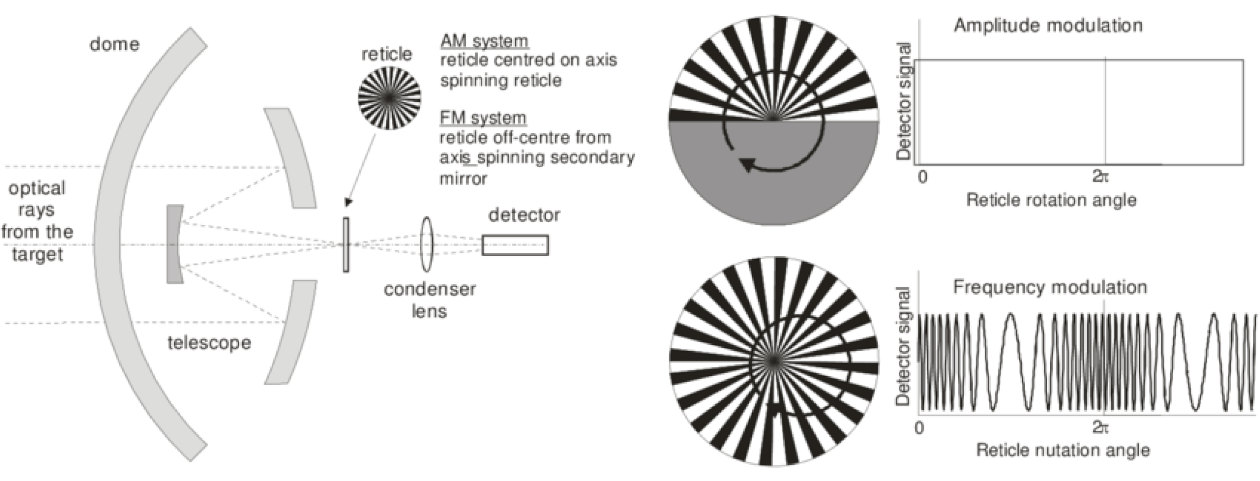
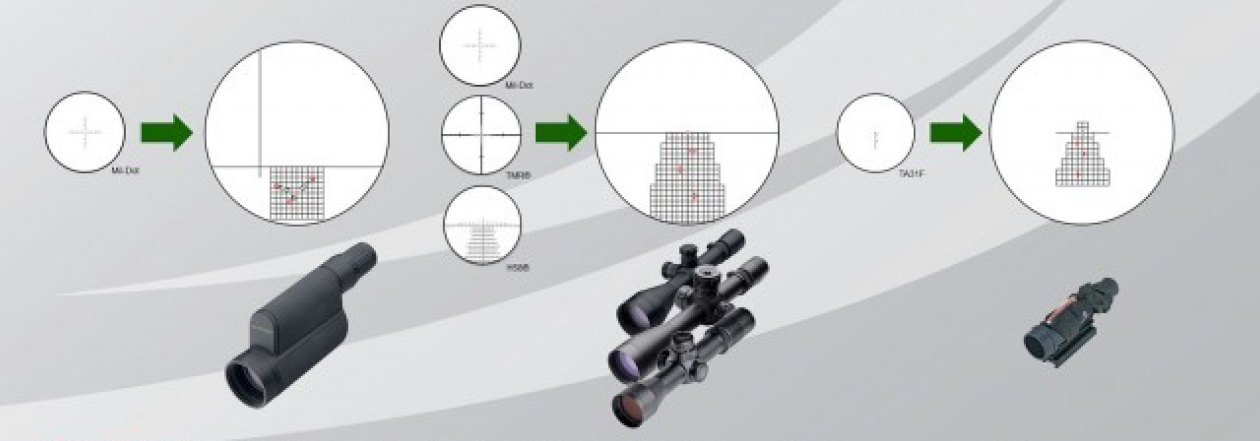
1. The introduction of mesh patterns. To universalize sights and improve the quality of aiming, weapon optics manufacturers have already begun developing a new reticle version with a mesh pattern. It is expected that it will allow the use of the sight with different models of weapons and ammunition, which will avoid the need to purchase different types of optics for each rifle. The mesh pattern will consist of two elements. The first will become the basis, which will be presented in the form of dozens of horizontal and vertical lines intersecting at right angles. The interval between them will vary depending on the tasks assigned to the shooter. The second element of the grid will be an auxiliary vertical line with markings. It will make it possible to estimate the number of meters to the target and make changes in connection with a difference in the trajectory of the bullet. It is expected that the mesh pattern will permanently solve the problem of the difficulty of holding targets. Thanks to him, it will be possible to forget about the turrets used to adjust the position of the grid in the horizontal and vertical directions.
2. Projection of grids into the visible arrow area. The future of gun nets is inextricably linked with the introduction of modern technologies into this area. With their help, it will be possible to simplify the shooter's tasks as much as possible and increase the likelihood of an accurate hit on the target. The Rapid Target Acquisition (RTA) tool is already being tested. It is a unique platform installed on the weapon and projects a grid in the shooter's field of view. Synchronization is carried out using wireless technology, relieving the soldier as much as possible (there is no need to carry a large amount of additional equipment). Testing such an innovation gives good results. The military involved in this process could easily hit targets at a distance of hundreds of meters from a standing position.
3. Synchronization with various applications. This direction of development of weapon nets still seems unrealistic to many. However, previous years' experience suggests that specialists will have to change their minds sooner or later. The principle of operation of future weapons optics should be based on introducing various parameters into special applications (for example, weapon characteristics, ammunition features, wind speed, distance to an object, humidity indicators, altitude, and much more). Special software will analyze this data and automatically correct the position of the grid. To hit the target, the user will only have to shoot correctly.
The main application of reticles is weapon optics. It is used primarily by the military and is actively used during various combat missions. At the same time, civilians can also use nets. With their help, ordinary people do a lot of different work, without which it is impossible to do.
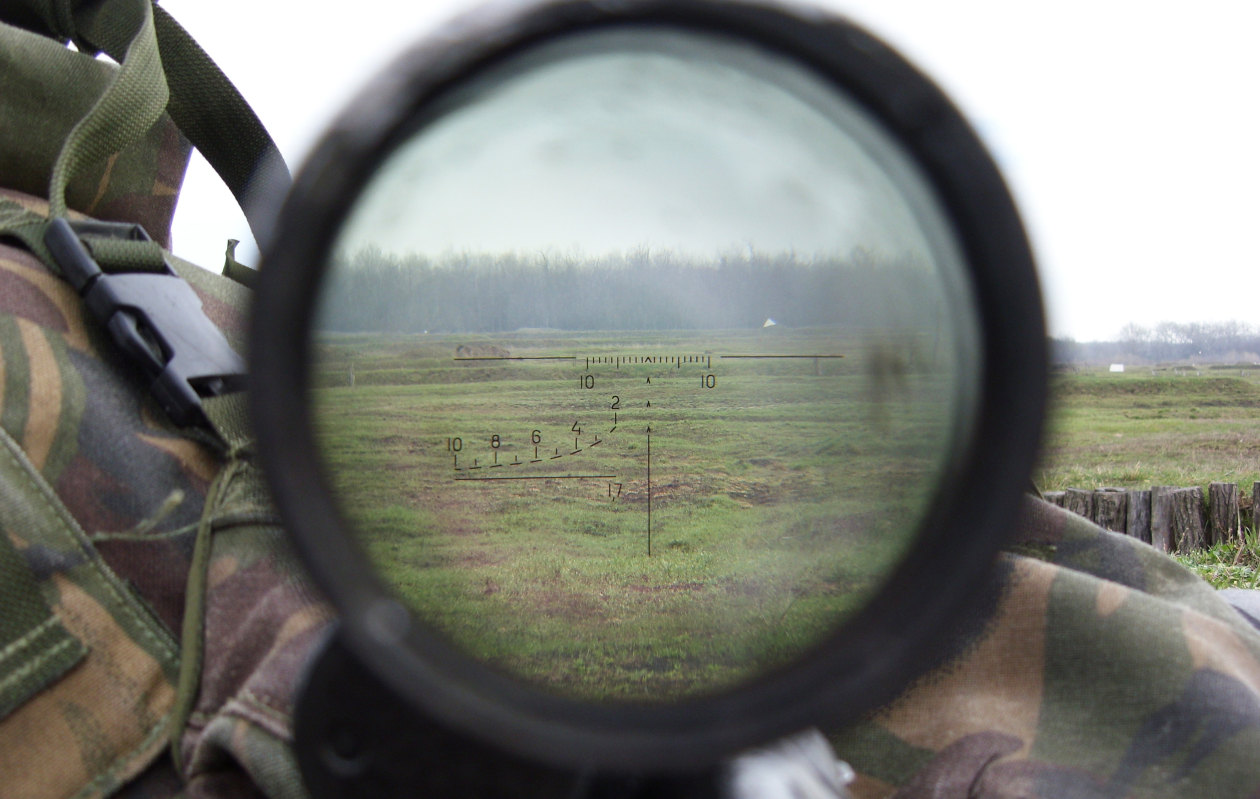
Options for using grids in the civil sphere:
1. Hunting. Most often among the civilian population, nets are used by hunters. With their help, they simplify the process of aiming and increase their chances of catching a large trophy. Dozens of types of nets are suitable for hunting. The optimal one is selected depending on the kind of hunting weapon, ammunition, dimensions, and animal behavior, as well as environmental conditions. Each of the reticles is distinguished by its pattern, which increases the effectiveness of aiming in a given situation. Most often, hunters use grids that allow you to determine the distance to the animal, estimate its dimensions and correctly calculate the bullet drop compensation. Illuminated patterns are no less popular, helping to shoot at night and make a minimum of misses.
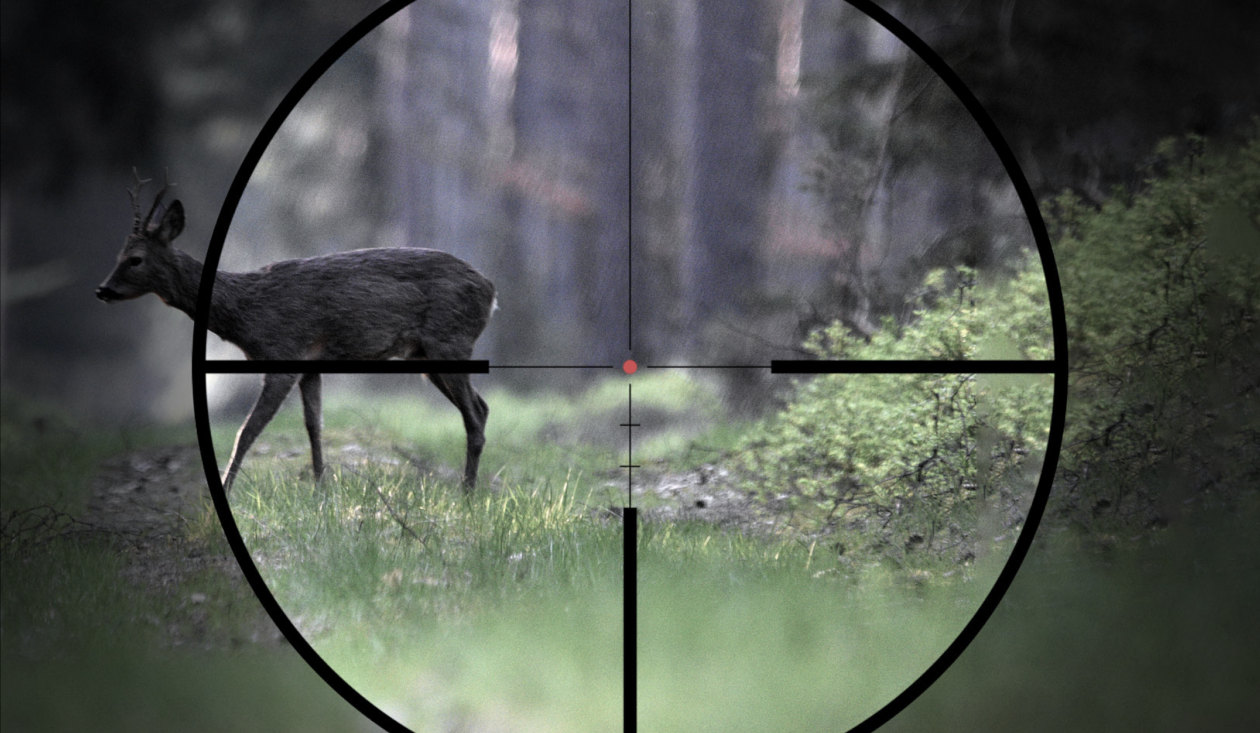
2 Recreational activities. If you wish, you can come up with many types of entertainment in which sights with reticles are helpful. The most popular of them are various military games (for example, paintball), in which participants shoot at each other with “ammunition” that is safe for life and health. Reticles are often used in these games. They help people aim more accurately and achieve victories over a fictional opponent. Reticles are also used in dozens of computer games, where the main characters wield different weapons and use optical sights while shooting.
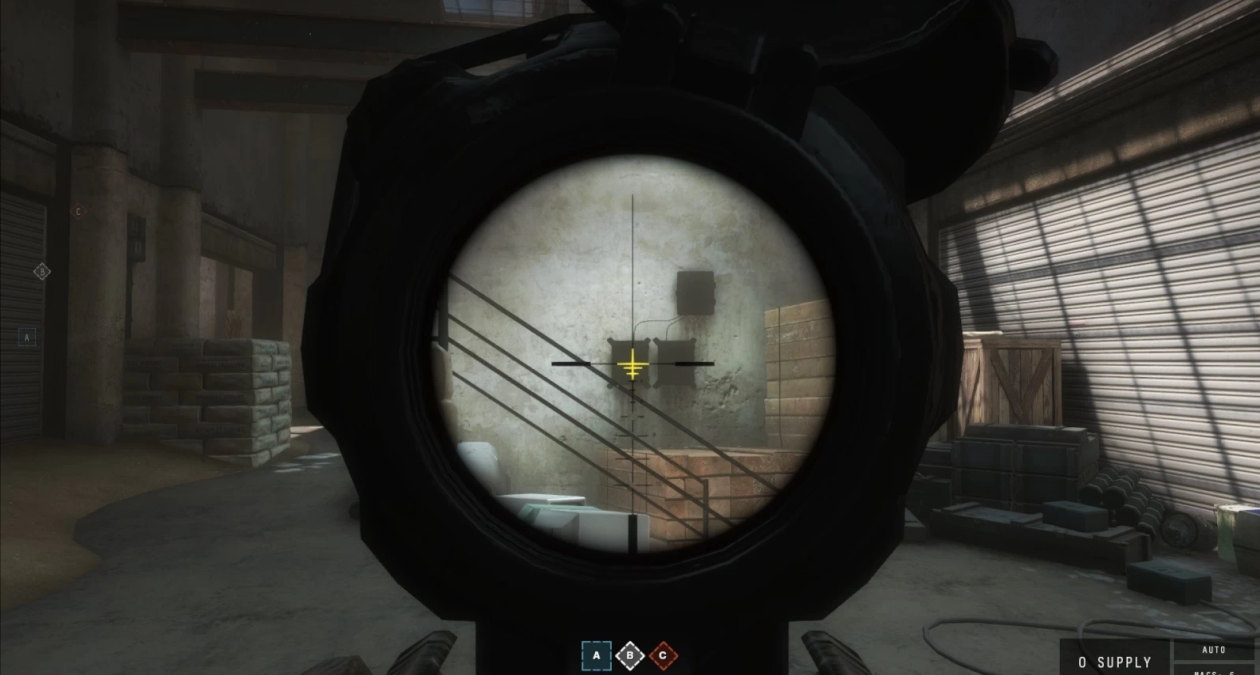
3. Sports competitions. Since ancient times, people have competed with each other in accuracy and greatly benefited from it. The ability to shoot accurately was valued at all times. Nowadays, a considerable number of shooting competitions are held. Participants use rifles with optical sights, supplemented with different types of reticles. These additions increase the percentage of accurate shots and make matches more attractive to spectators, television, and sponsors. Reticles are also used in biathlon, where participants compete in cross-country skiing and shooting accuracy from different positions (standing and lying down). This sport is one of the most popular winter sports; therefore, it attracts the attention of many spectators.
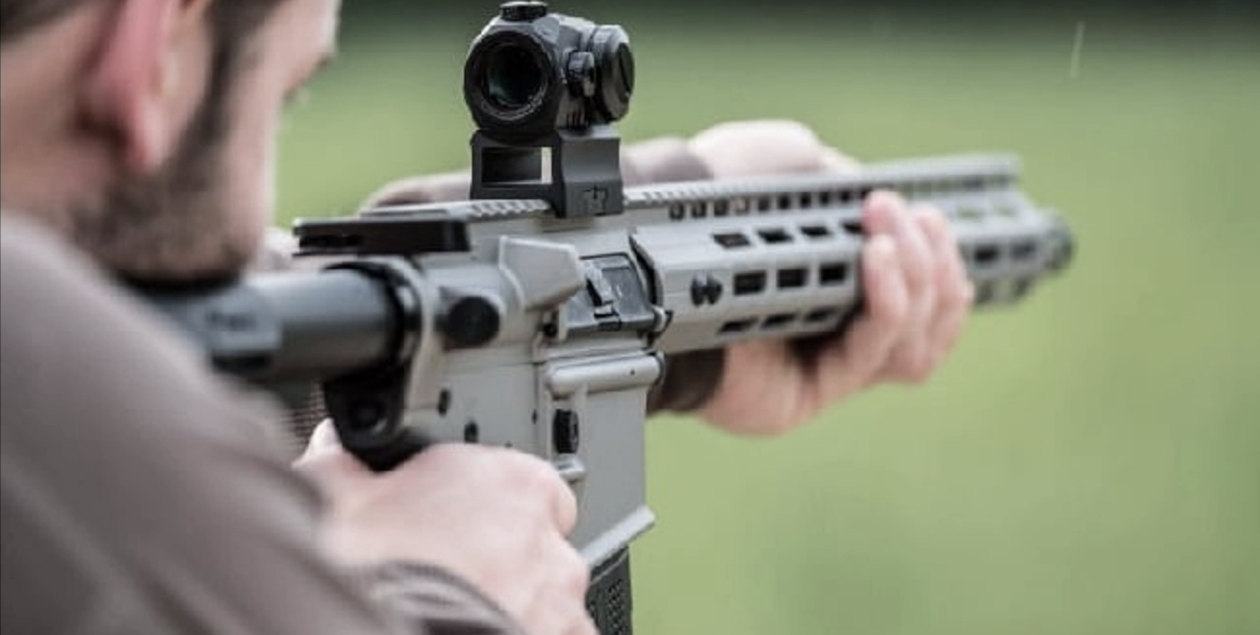
4. Geodesy. This ancient science is actively used today. It involves measuring various land areas to create maps of the area. Also, this science helps in planning construction and many other types of work. In geodesy, the principal instruments are levels and theodolites. The former is used to calculate the height difference between several points, and the latter is used to determine the verticality and horizontality of surfaces. Both devices use grids. They help specialists cope with the tasks quickly and determine the distance to a particular object.

5. Astronomy. This science appeared long before our era. She studied and continues to explore various space objects and the processes taking place in the Universe. Due to the distance from the Earth, space exploration becomes quite complicated. Telescopes of different types simplify the task of scientists a little. Many of them have a unique grid that helps you navigate in space (for example, quickly find the location of the North Star in the sky) and promptly bring the device to working condition. Also, in astronomical telescopes, grids measure the angular distances between stars. There is also a grid in optics designed for amateur astronomers. It simplifies the process of pointing the device at a space object of interest to the user (for example, a planet, comet, star, satellite). The significance of the grid for astronomers is so great that they named one of the constellations of the young hemisphere (Reticulum) in her honor. It contains 22 stars, each visible to the naked eye.
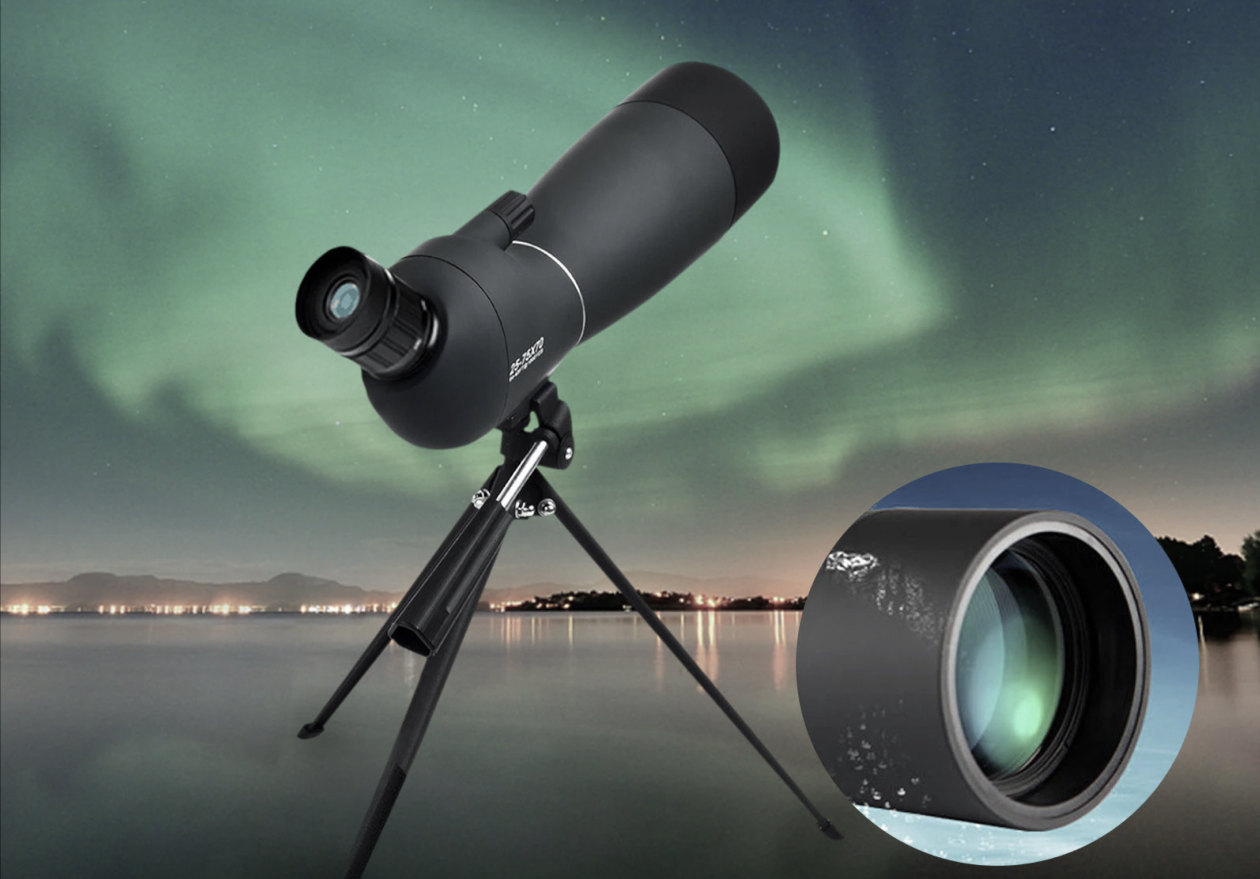
Weapon reticles are an essential element of the optics used. Their help makes it possible to aim faster and make accurate shots even under non-ideal external conditions. There are many types of such networks. Each has its history of occurrence and is intended to perform specific tasks. Knowing all this information, you can choose the right option for your weapon and surprise everyone with high shooting accuracy.
Table of contents